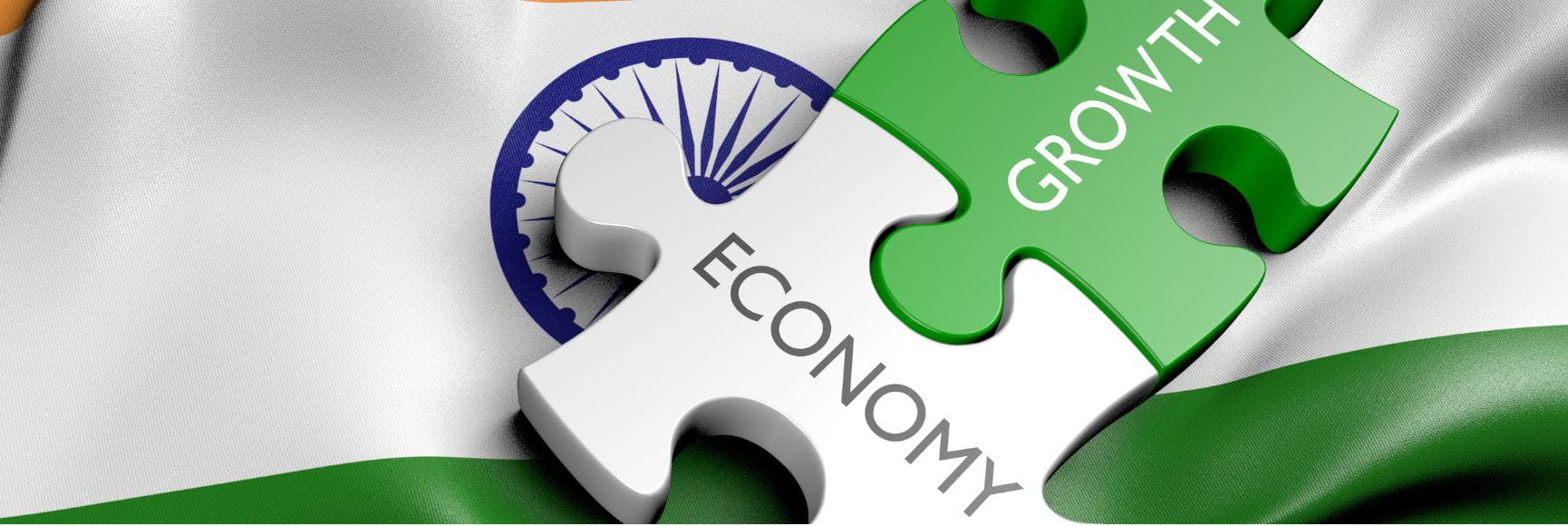India's evolving fiscal management framework is at a critical juncture. Focusing on reducing fiscal deficits and controlling public debt, the Indian government has signaled a commitment to sustainable economic growth while balancing spending priorities.
In her recent Union Budget presentation, Finance Minister Nirmala Sitharaman outlined a plan to keep the fiscal deficit on a trajectory that would place central government debt on a declining path relative to GDP after 2025-26. This balanced approach is key to promoting long-term growth without compromising fiscal discipline. Additionally, it’s crucial to acknowledge the role of India’s individual states, which collectively contribute over 50% of the combined government expenditure. Their fiscal decisions are essential in shaping the overall financial landscape, affecting both expenditure priorities and the efficacy of centrally driven fiscal policies.
Fiscal management in India is governed by The Fiscal Responsibility and Budget Management Act, 2003 (FRBMA), an act of the Indian Parliament aimed at institutionalizing financial discipline. The FRBMA's primary objectives include reducing India's fiscal deficit, improving macroeconomic management, and moving towards a balanced budget to strengthen fiscal prudence. Initially, the law aimed to eliminate the revenue deficit and bring the fiscal deficit to a manageable 3% of GDP.
The Goods and Services Tax (GST) framework also plays a vital role in India’s fiscal structure, promoting a unified tax base across states while facilitating more efficient revenue collection.
India’s fiscal deficit for April–September 2024 was reported at ₹4.75 trillion, or 29.4% of the 2024–25 target, showing an improvement over the previous year’s figure of ₹7.02 trillion. Such fiscal data, combined with GST revenues, reflects the country’s ongoing efforts toward a balanced fiscal position. For FY25, the government has set an ambitious fiscal deficit target of 4.9% of GDP. However, achieving this target may be challenging due to underperformance in capital expenditure—a key driver of long-term growth and infrastructure development.
Three key international economic organizations—ADB, the IMF, and the World Bank—have shared distinct perspectives on India’s sustainable fiscal management outlook.
The Asian Development Bank (ADB) has expressed concern over lagging capital expenditure, noting that India will need to accelerate spending by 39% in the remaining months of the fiscal year to meet budget projections, which may constrain infrastructure and medium-term growth. The ADB projects India’s GDP growth at 7% for FY24, buoyed by increased government spending and improvements in agricultural output.
The IMF has retained its growth forecast for India at 7% for FY25 and 6.5% for FY26, acknowledging India’s stabilization following the pandemic. However, it noted that post-pandemic pent-up demand, which once boosted growth, has now stabilized, underscoring India’s need to return to its long-term growth potential. The IMF’s cautious optimism about India's fiscal position suggests that while fiscal consolidation is crucial, sustained growth will require strategic investments in productivity-enhancing sectors.
The World Bank has recognized India's efforts toward fiscal consolidation, projecting a decline in the fiscal deficit from 6.4% to 5.9% of GDP in FY23/24. This is expected to stabilize public debt at around 83% of GDP—a promising indicator of sustainability, given India’s growth outlook. Additionally, the World Bank forecasts a reduction in the current account deficit to 1.4% of GDP, supported by India’s robust foreign exchange reserves, which reached USD 683 billion in October 2024. The Bank’s outlook remains largely optimistic, emphasizing trade’s role as a pillar of sustained growth and the need for stronger trade policies and partnerships.
While both the IMF and World Bank project steady growth for India, their emphasis varies. The IMF highlights the importance of structural reforms to drive long-term productivity, while the World Bank focuses on fiscal consolidation, debt stabilization, and trade enhancement as key growth drivers. Although certain healthy divergences exist in their viewpoints, it is apparent that the IMF and World Bank teams frequently exchange insights, ensuring their perspectives are generally well-aligned. The World Bank’s observation of India's strong foreign reserves and narrowing current account deficit reinforces fiscal stability, which the IMF also indirectly supports through its emphasis on a stable macroeconomic foundation.
In conclusion, India’s latest fiscal policy for 2024-25 presents a careful balance between managing economic growth and fiscal responsibility. Plans to stabilize public debt while reducing fiscal deficits align well with international expectations, as highlighted by both the World Bank and IMF. Yet, challenges persist, particularly in meeting capital expenditure targets critical to infrastructure and sustained economic growth. Moving forward, achieving a balance between growth-focused investments and fiscal discipline will be essential for India to meet its fiscal objectives and sustain economic momentum. A prudent approach would involve enhancing expenditure efficiency, focusing on optimal returns from both recurrent and capital outlays.






